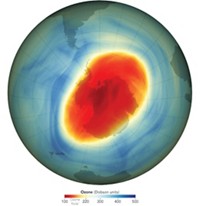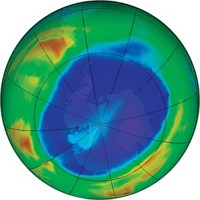Advertisement
Grab your lab coat. Let's get started
Welcome!
Welcome!
Create an account below to get 6 C&EN articles per month, receive newsletters and more - all free.
It seems this is your first time logging in online. Please enter the following information to continue.
As an ACS member you automatically get access to this site. All we need is few more details to create your reading experience.
Not you? Sign in with a different account.
Not you? Sign in with a different account.
ERROR 1
ERROR 1
ERROR 2
ERROR 2
ERROR 2
ERROR 2
ERROR 2
Password and Confirm password must match.
If you have an ACS member number, please enter it here so we can link this account to your membership. (optional)
ERROR 2
ACS values your privacy. By submitting your information, you are gaining access to C&EN and subscribing to our weekly newsletter. We use the information you provide to make your reading experience better, and we will never sell your data to third party members.
Atmospheric Chemistry
Levels of ozone-depleting HCFC-141b rise in atmosphere
by Cheryl Hogue
May 6, 2022
| A version of this story appeared in
Volume 100, Issue 16

Countries are reporting that production and use of the ozone-depleting substance hydrochlorofluorocarbon-141b (HCFC-141b) has fallen since 2013. But the amount of HCFC-141b in the atmosphere rose between 2017 and 2021, an international team of scientists says in a preprint paper that is being peer-reviewed (Atmos. Chem. Phys. Discuss. 2022, DOI: 10.5194/acp-2022-298). The researchers examined atmospheric measurements from east Asia, Australia, northwestern Europe, and the US—areas that accounted for about a third of global HCFC-141b emissions in 2020. The team determined that in these regions, releases of the chemical declined each year from 2017 to 2021. But average global concentrations increased in the same period. If the government reports on declining production and use of HCFC-141b are correct, there are two likely causes for the global increase, the researchers suggest. One is that HCFC-141b is leaking from discarded appliances that are insulated with plastic foam puffed up with the chemical. The other is that the substance is being produced and dispersed to the environment through industrial activities such as cleaning of electronics—but those practices aren’t being reported.




Join the conversation
Contact the reporter
Submit a Letter to the Editor for publication
Engage with us on Twitter